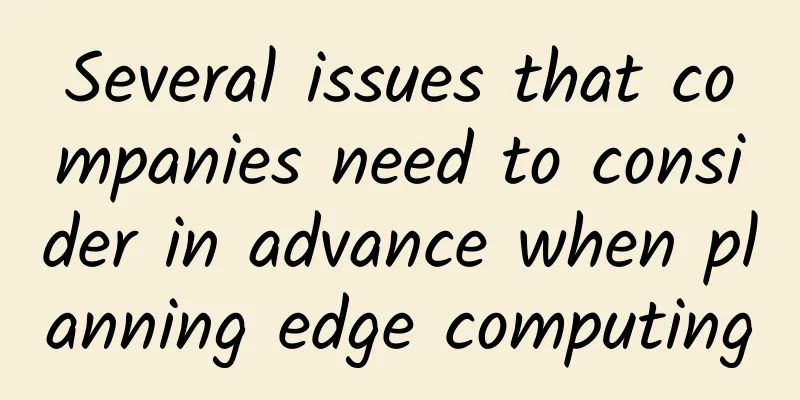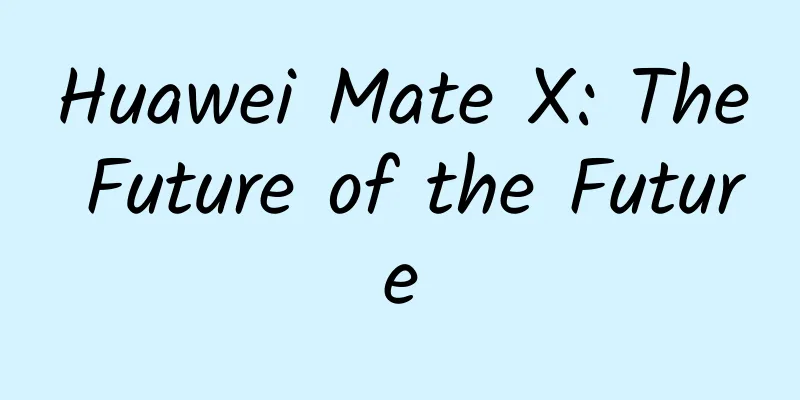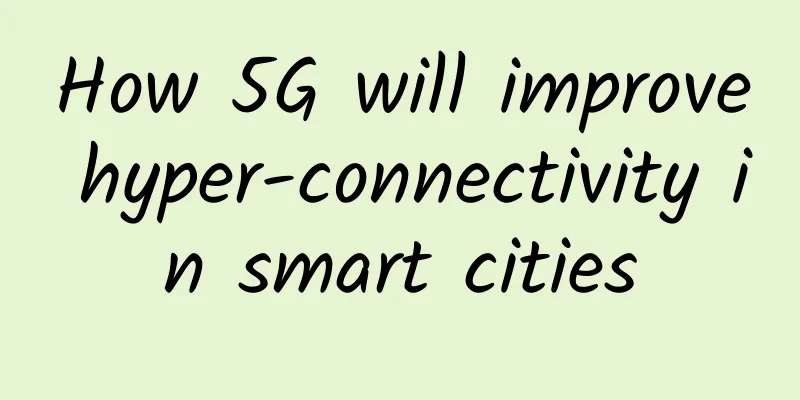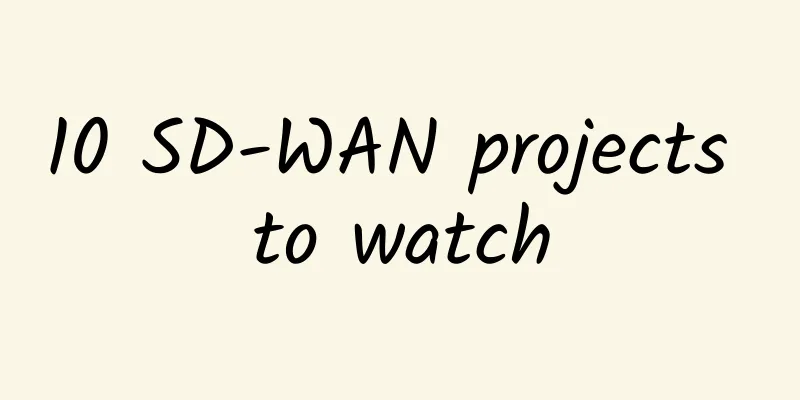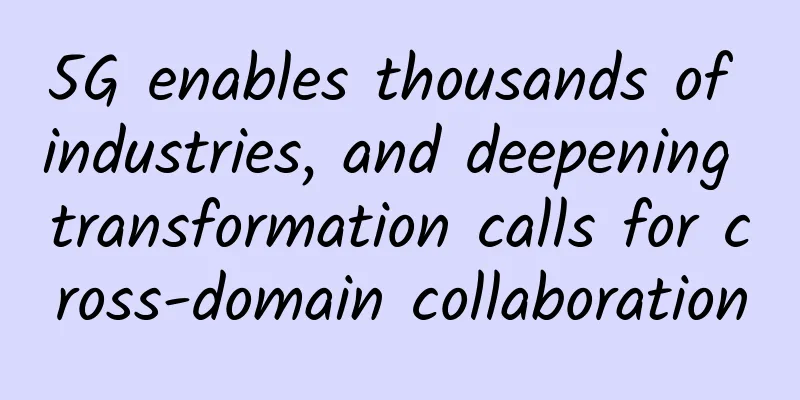AI helps smart cities upgrade, Huawei's "Urban Intelligence" makes cities more vibrant
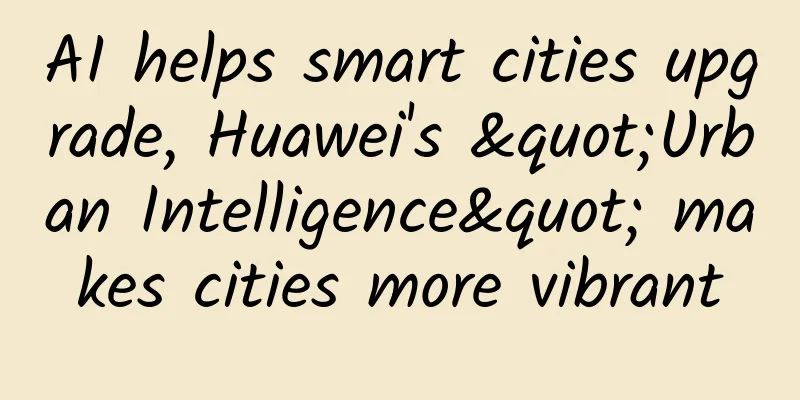
|
[51CTO.com original article] In the era of digital transformation, the impact of technology waves such as cloud computing, big data, the Internet of Things, and artificial intelligence has brought far-reaching impacts on urban development, and the call for smart city construction is endless. New ICT technologies are being integrated with urban management, urban services, and urban governance, and urban industrial transformation is taking place. As a key force in promoting the construction of smart cities in China, Huawei was recently invited to attend the 2018 China International High-Tech Fair (CHTF). At the 2018 Asia-Pacific Smart City Development Summit Forum held during the event, Huawei shared its latest understanding of smart cities and officially released its new concept of "Urban Intelligence". What is "Urban Intelligence"? How does Huawei build "Urban Intelligence"? At present, how is Huawei's "Urban Intelligence" being implemented? What are the difficulties in the development of the smart city industry in the future, and what solutions does Huawei have? Let us learn about it together. What is an intelligent city? What does Huawei say? "'Urban Intelligence' is a fusion system in which the physical world and the digital world of the city are mapped and interact with each other. 'Urban Intelligence' can realize the digitization of all elements of the city, visualization of the real-time status of urban operations, and coordination and intelligence of urban management decisions. It is a new form of future cities and the only way for urban development." Cai Yinghua, President of Huawei EBG China, gave the above definition of "Urban Intelligence" in his speech at the forum that day.
Cai Yinghua, President of Huawei EBG China Huawei's positioning in smart cities has always been very clear, that is, to be the enabler and promoter of smart cities. Huawei believes that a smart city is not enough with just a brain. Through the smart brain, intelligent edge platform and ubiquitous device-side perception, the big data of people, things and people in the physical city is comprehensively analyzed and transmitted back. The complex physical mass information and industry wisdom are fed back to the physical city through the calculation and analysis of the intelligent body, thus realizing a smart city. During the meeting, Zhang Yande, President of Huawei Enterprise Business China Smart City, said in an interview with reporters that since 2015, the smart city business has been regarded as one of Huawei's key strategic directions. Huawei's smart city solution development is divided into three stages: in 2016, Huawei proposed the "one cloud, two networks, three platforms" solution architecture for smart cities; in 2017, the concept of "smart city nervous system" was released. In the operation and management of the city, the city's smart brain, central nervous system and the city's own peripheral systems are used to achieve the interconnection of all things in the city; and in the third stage, based on cloud computing, big data, artificial intelligence and other technologies, the "city intelligence body" will give the city vitality and make the city more intelligent. On this basis, Huawei's overall platform based on Huawei Cloud, AI and other elements is built to connect the physical world and the digital world.
Zhang Yande, President of Smart City, Huawei Enterprise Business China "In order to enable cities to evolve and grow better and give them life, we are committed to building a digital platform through the application of new technologies, and working with ecosystem partners to create overall business applications. Ultimately, it will make our lives more convenient, help city managers improve management efficiency, and promote urban industrial transformation." said Zhang Yande. How to build an intelligent city? So, how does Huawei build an intelligent city body? Cai Yinghua pointed out that Huawei's "intelligent city body" is based on Huawei Cloud and uses artificial intelligence technology (AI) as its engine. First, Huawei's technical capabilities in IOT are used to build the IoT perception layer, realize IoT full perception, data preprocessing, and front-end intelligence; and build the infrastructure layer and industry enablement layer based on Huawei Cloud. Huawei fully leverages its capabilities in chips, cloud data centers, networks, and cloud platform software to build the ICT infrastructure layer. At the same time, in the industry enablement layer, Huawei Cloud gathers Huawei's own and partners' capabilities in big data, IoT, GIS, video cloud, and converged communications (i.e., five coordinated efforts), builds application enablement, data enablement, and full-stack full-scenario AI platforms (i.e., three enablements), and provides support for the integration of industry applications and AI. Secondly, realize the integration of industry applications and AI. Based on Huawei's full-stack, full-scenario AI solution, deeply integrate with industry scenarios to build intelligent entities for industry fields. At present, Huawei and its partners have built multiple urban intelligent entities for different business scenarios on a unified urban data base, including: traffic intelligent entity, government service intelligent entity, public safety intelligent entity, urban lifeline intelligent entity, industrial manufacturing intelligent entity, etc. Yao Jiankui, Chief Engineer of Huawei Smart City in China, told reporters that Huawei released a full-stack, full-scenario AI solution at this year's HC conference. The very important purpose is to significantly reduce the threshold and cost of AI, making AI a product that everyone can afford, use well, and use with confidence. In the field of smart cities, Huawei will open AI capabilities to ecological partners through the platform, build intelligent entities for various industry scenarios in the city, and truly build the cornerstone of digital China. The reporter learned that the "full stack" of Huawei's full-stack, full-scenario AI solution refers to a full-stack solution from the perspective of technical functions, including chips, chip enablement, training and reasoning frameworks, and application enablement. It is worth mentioning that Huawei's Ascend artificial intelligence chip is a highlight, among which Ascend 910 is a server chip and Ascend 310 is a low-power chip. "Full scenario" includes deployment environments such as public cloud, private cloud, various edge computing, IoT industry terminals, and consumer terminals. What has Huawei done so far around urban intelligence? During this CHTF, the layout of Huawei's Smart City booth was quite eye-catching. The booth was a "virtual smart city" full of future life experience. Visitors could obtain a virtual "citizen card" by scanning the QR code, and with this identity, visitors could experience business in various exhibition islands. In order to help the audience understand the actual implementation of "urban intelligence" in business more clearly, the booth used comics from the perspective of "a day in the life of citizens" to connect the main lines of citizens' lives in the city and show the future life scenes in smart cities.
Huawei's smart healthcare, education, transportation and public safety exhibition areas at the High-Tech Fair At present, Huawei has completed a series of smart city projects in Longgang, Lanzhou, Yiyang, Qingdao, Guilin, Weifang, etc. In these cities, different types of urban intelligent entities are used to make city operations smarter, urban management more efficient, enterprises and citizens more convenient to obtain services, and urban business collaboration smoother. For example, Shenzhen has the highest vehicle density in China, with an average of 510 vehicles per kilometer, the highest in the country. In the past, traffic congestion was very serious. In 2017, Shenzhen Traffic Police and Huawei worked together to build a "traffic intelligence body" and jointly created the Huawei Cloud TrafficGO traffic intelligence body solution. In terms of computing intelligence, the solution uses Huawei Atlas artificial intelligence server, which can process hundreds of millions of pictures every day, 30 times the industry level; in terms of perception intelligence, it uses AI cameras that can capture vehicles in 4 lanes and 200 faces at the same time, which is 4 times the industry level; in terms of cognitive intelligence, Huawei and Shenzhen Traffic Management Bureau jointly innovated and designed more than 100 AI algorithms based on traffic scenarios to optimize the control strategy of traffic lights in real time. The results of practice show that the average vehicle speed in Shenzhen has increased by 15%, gradually withdrawing from the list of "congested cities". In the first quarter of this year, the national urban congestion ranked 46th, and ranked first among first-tier cities. In the past, Shenzhen's traffic was based on the traffic lights and the countdown. Now, the traffic lights look at the cars, and the countdown allows them to pass. Taking Shenzhen Longgang District as an example, Huawei and the Longgang District Government jointly created a "public security intelligent body". Relying on more than 7,000 AI high-definition video surveillance cameras covering the entire district, automatic identification, trajectory tracking, and active warning are achieved; the video cloud solution is used to combine video networking with artificial intelligence and public big data to achieve the transformation from "solving cases -> warning". The edge computing + artificial intelligence algorithm can achieve second-level search in massive videos, greatly improving the efficiency of police solving cases. Last year, a 3-year-old child was lost in Shenzhen Longgang District. The police locked the suspect through technical means such as face recognition, trajectory tracking, and public security data networking, and found the child within 15 hours. According to statistics, the number of criminal cases in Longgang District in 2017 decreased by 13.27% year-on-year; among them, the eight types of violent cases decreased by 28.53% year-on-year, reaching a new low since the establishment of the district. Among them, the number of solved cases of burglary and fraud, which seriously affect the public's sense of security and satisfaction, increased by 8.54% and 26.33% year-on-year respectively. Zhang Yande revealed that Huawei's smart city solutions have served more than 160 cities in more than 40 countries around the world. He said that each city has commonalities and individuality. The biggest commonality in smart city construction lies in the construction of the entire smart city and the entire digital foundation. After more than 30 years of development, Huawei is best at ICT infrastructure. Huawei focuses on the areas that have the most commonalities with smart city construction, providing digital platforms and communication networks. Then, on the business application side, it cooperates with partners to provide differentiated solutions for city customers. ***, when the reporter asked about the difficulties in the future development of the smart city industry, Zhang Yande pointed out that the construction of smart cities is still facing problems such as difficulty in urban data integration, poor business integration, and the overall management and planning of information construction funds. Looking ahead to the construction of smart cities, he said: "To promote urban evolution and construction, Huawei will build a more efficient and low-cost digital platform through the application of newer technologies to meet the needs of smart city construction; continue to implement the overall ecological strategy, and work with partners to create more personalized services based on commonalities that are more suitable for each city to meet the overall management needs of the city; provide enterprises with Huawei's software development platform capabilities, promote urban industrial transformation, and empower cities." [51CTO original article, please indicate the original author and source as 51CTO.com when reprinting on partner sites] |
<<: The 5G test in 2019: How to invest if you don’t want to be left behind? You are in a dilemma!
Recommend
RAKsmart bare metal cloud/cloud server 30% off, physical server flash sale starting from $30/month, cluster server/high bandwidth server special price
This month, RAKsmart's new bare metal cloud p...
IDC: Core network infrastructure market growth is slow but stable
According to IDC's Global Ethernet Switch and...
AT&T confirms testing of 400Gbps Ethernet connection
AT&T said it tested 400 Gbps Ethernet (400GbE...
Symantec releases new CISO survey: Cloud becomes the next starting point for cybercrime
Recently, Symantec, a global leader in cybersecur...
How far is 400G from true commercial deployment?
With the continuous growth of data traffic, the d...
API requests are slow? This time the backend is not to blame
question During the development process, we found...
Digital currency: Don’t be fooled by the “blockchain” cover
Since the beginning of this year, the digital cur...
Operating data of the three major operators in November: 5G package users exceeded 700 million
Recently, the three major operators announced the...
In 2017, the industry cloud finally became a big thing. It is not as simple as cloud + industry!
A reporter once asked many industry customers a q...
Who moved my broadband? A record of the discovery and solution process of HTTP hijacking
The hijacking we encounter in daily life is usual...
New 5G LAN technology advances QoS across the enterprise
As enterprises integrate 5G technology into their...
kernel panic-not syncing:VFS:Unable to mount root fs on unknown-block
According to the feedback from the merchant, a us...
Intelligent mining is an inevitable trend, and 5G commercialization has achieved remarkable results
At present, despite the rapid rise of new energy ...
80VPS: VPS annual payment starts from 199 yuan, dedicated server starts from 350 yuan/month, Hong Kong/US/Korea data center
Last month, the tribe shared information about 80...
Why should enterprises choose SD-WAN?
While MPLS still dominates the WAN market, no ent...

